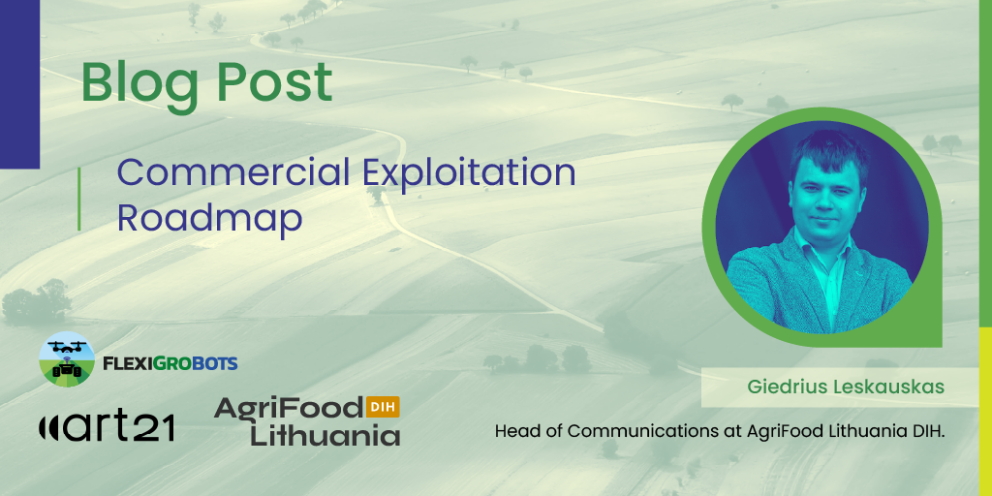Digital Innovation Hubs (DIHs) are crucial for the modernization and creation of an advanced and innovative agri-food ecosystem with a balance between financial and environmental sustainability across Europe. They are a great and convenient way to reach the end user, be it a farmer or a business entity. However, DIH is not yet a fully exploited tool in the agri-food ecosystem. Why is that? What determines this? IIs there a lack of an unconventional approach that would lead to even greater interest in Digital Innovation Hubs across Europe? This project will focus on DIHs and new business model offerings that will commercially enable the services and tools developed during the FlexiGroBots project and create value for the entire agri-food ecosystem.
What do we want to do?
Our goal is to provide the best opportunities to develop and commercialize the FlexiGroBots platform and the individual pilot hardware or software components being developed during this project. To this end, we have created a new, attractive and unconventional approach. During this task, such business models as Hardware-as-a-Service (HaaS) and Software-as-a-Service (SaaS) will be explored as viable alternatives to conventional approaches and business practices.
In order for this idea to reach its full potential, during modeling, a particular focus will be given to the activities and operational models of agriculture and / or robotics focused on Digital Innovation Hubs throughout Europe. It is not a coincidence that DIHs have been chosen as our key partners in promoting the use of the innovations created during the project. They are becoming more and more important players in the innovation ecosystem in Europe, looking for opportunities to enhance the quality of their services. Therefore, during this project we will create value for all actors of the ecosystem and this will allow us to achieve the maximum possible results.
Today, DIHs are already a really reliable partner for the end-users (farmers and agriculture industry), so this collaboration will help us reach end users in different regions directly. Therefore, we will be able to sustain pilot demonstrations and promote the test-before-invest approach to new product and service uptake by interested parties.
This DIHs-oriented business model development strategy will not only enable the widespread empowerment of the products developed during the project, but will also strengthen the entire ecosystem of the sector and build a trust-based network between our technology and service stakeholders.
In addition, it is worth noting that this task is closely linked to other dissemination and communication activities and provides a basis for further technology transfer facilitation and project result long-term sustainability planning.
What if we were a little more specific?
The broad aim of this task is:
- To develop the appropriate business models for the services and tools provided by each Pilot implemented within FlexiGroBots (3 in total) and for the FlexiGroBots platform developed by ATOS, as well as, for the integration of the Pilots’ services within the platform.
- To create the necessary ecosystem through which the solutions developed within the project can be commercially exploited – protagonist to this will be the involvement of DIHs
What have we done so far?
However, it is not only goals or a vision. We have already made a huge progress that allows us to hope for even greater success in the future.
- We have already identified the individual KER (key exploitable results) of each pilot and the platform and have a first picture of the potential business model canvas that we could follow for the further development of the respective business models. This was achieved through a questionnaire, which was prepared by us and distributed amongst partners.
- We have initiated a series of internal meetings with the partners involved in the implementation of the pilots and the development of the platform. These meetings are necessary in order for us to explore and crystallize the separate elements of the business model, i.e. exploitable elements, value propositions, distribution and service delivery models, etc. The outcome of these meetings - the first draft of the business models - will soon be available.
- We are in the process of mapping the currently existing ecosystem. Once this is done, we will be able to communicate with actors of the ecosystem more efficiently, establish a reliable relationship with them and involve them - especially DIHs - in the exploitation of the project’s outcomes.

